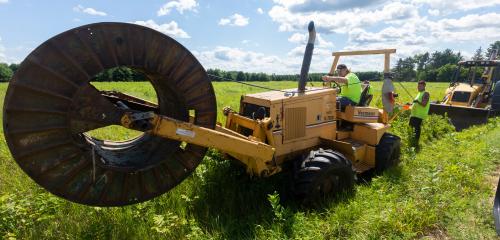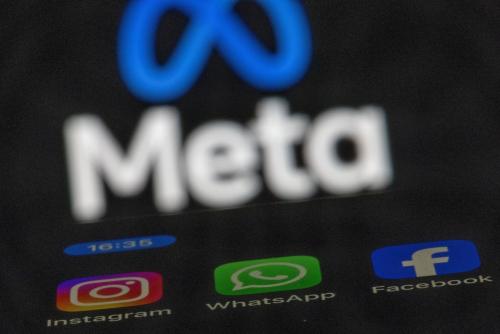The pandemic revealed gaping disparities in broadband access and use in urban neighborhoods and rural communities alike. As residents were cut off from health information and telemedicine, students were unable to continue their studies online, citizens in need lacked access to government and nonprofit services, and furloughed employees were unable to search for work, the consequences weighed heavily in many communities.
Historic broadband investments are now being made through the Infrastructure Investment and Jobs Act (IIJA), with states setting priorities in consultation with local governments. Also momentous is the IJAA’s emphasis on broadband use as well as broadband networks, with requirements for affordability, and funding for subscriptions, devices, training, and support. As state and local governments develop their new broadband plans, they have an opportunity to do more than build new networks. Providing fast and reliable broadband is only a first step; as policymakers need to think holistically about how to achieve widespread and inclusive technology use—enhancing not just infrastructure, but the digital human capital to use it in both urban and rural communities.
Making new investments can generate significant benefits for local economies, according to our recent research. In what economist Enrico Moretti has called the human capital century, individual and community fortunes are driven by human capital, which is often defined as educational attainment. We argue that broadband use is a form of digital human capital. Like education, broadband use can facilitate access to information and the development of skills. As with other forms of human capital, broadband use can also be expected to affect outcomes for the broader community, with multipliers and spillover effects for labor markets and local institutions, and richer information networks to encourage innovation.
Prior studies on broadband, for example, have mostly examined the effects of infrastructure investments because of limited data on broadband adoption and use in communities. While that research has shown many positive effects for broadband deployment, investments have not always benefitted residents in terms of wages or employment. Moreover, the availability of broadband service indicates little about the extent to which local populations can afford and use the technology.
When the American Community Survey data on broadband subscriptions first became available for all census tracts for 2017, it showed that Navajo Nation, rural Wheeler County, GA, and zip codes in Memphis all had only around one-quarter of the population with broadband subscriptions, including on cell phones. Even in highly connected communities, such as San Jose in Silicon Valley, there were zip codes where only 40% of the population had any kind of broadband, including through mobile connections.
New data and new evidence demonstrate why policymakers can’t afford to ignore these place-based disparities. In our 2021 Oxford University Press book, Choosing the Future: Technology and Opportunity in Communities, we track outcomes for broadband use—that is, subscriptions—in counties and metros over nearly two decades from 2000 to 2017.
Examining change over time allows us to have greater confidence that growth in broadband use is a cause of the economic impacts we see, controlling for other influences on local economies.
Such analysis has been difficult to carry out in the past because of limited data on broadband subscriptions in communities: subscription data from providers is released by the Federal Communications Commission in quintiles that are imprecise indicators of differences over time or across communities. We use unique data for cities and counties estimated from national data (using multilevel models) as well as the data from the American Community Survey for later years.[1]
We find that, as the percentage of the population with broadband subscriptions rises, it predicts growth in prosperity, median income, and employment in communities. Across multiple models and with controls for demographics and industries, broadband subscriptions predict a range of positive economic outcomes.
With data for the 50 largest metros from 2000 onward, we find that broadband subscriptions consistently predict greater full-time employment as well as prosperity, using the Brookings Metro Monitor index (which defines prosperity as productivity, wages, and standard of living). Broadband subscriptions increase prosperity more in communities with at least 30% of the population between 25-34 years of age, and this may be because of the digital skills of younger residents. When broadband subscriptions are combined with IT employment, the combination increases prosperity and growth, though the effects of IT employment have declined over time. Broadband subscriptions alone mattered for economic gains in all metros we examined, whether they had younger populations or were tech hubs.
Counties include rural communities, and we first examine the data for all counties in 2017. We find that broadband subscriptions are positively related to a prosperity index adapted from an Economic Innovation Group index that includes poverty rates, educational attainment, labor force participation, housing vacancy rates, median household income, changes in employment, and changes in business establishments. Controlling for other factors, a one percent increase in broadband subscriptions is associated with an additional $40 increase in household median income at the county level. Broadband subscriptions predict higher median household income in urban, suburban, and rural counties. To address causation, we conduct more rigorous tests, with two-stage models and a pooled analysis that leverages the county data we have across years. Broadband use remains significant for median income in these models as well. The benefits are greatest in counties with higher educational attainment (another form of human capital), but broadband subscriptions alone make a significant difference for county median income over time.
Finally, using county data from 2007-17, we compare the impact of broadband subscriptions with broadband availability, traditionally measured with data on the number of providers serving an area. As we expected, broadband subscriptions have a stronger relationship to the growth of county median income than the number of providers. Inclusive adoption is a better predictor of growth of median income than the availability of broadband. Because we are examining this relationship over time, we can see that it is broadband subscriptions driving this growth, rather than higher median income enabling broadband adoption.
The message is clear across multiple models, in counties and metros, and over time. Inclusive broadband use generates greater social benefits than infrastructure alone. While investing in the physical capital for fast and reliable networks is necessary, digital human capital is also required to exploit technology to its fullest potential. This was the case prior to the pandemic, which accelerated the digital transformation in the economy. It is likely to be even more critical for the future.
A digital human capital perspective requires a comprehensive approach, addressing barriers to broadband use such as affordability, skills, and technical support in community centers and libraries. It requires local and community-based leadership because outreach and needs will differ across urban and rural contexts, and for different demographic groups. It requires dynamic strategies, as technology evolves, along with necessary skills in the workforce and potential applications in businesses, education, and government.
Inclusive broadband use can be integrated into other strategies for human capital and economic development. It can facilitate local efforts to address the future of work, preparing residents for the middle-skill jobs and opportunity jobs that offer benefits and a living wage. Research has shown that commercial use of the internet, including by microbusinesses, has an even greater impact on local prosperity and median income than broadband alone, and helped to lower unemployment both before and during the pandemic shutdowns. A digital human capital perspective would provide funding and training for use of online platforms and digital tools as one strategy for small business development, especially for marginalized communities, hit hardest during the pandemic. Equitable and widespread broadband use in communities can support other place-based strategies to combat spatial inequality at different scales, whether across regions or neighborhoods. To achieve these aims, advances in infrastructure must be accompanied by growth in digital human capital in communities.
[1]: Using data on broadband subscriptions from the 100,000 household Current Population Survey conducted by the US Bureau of the Census between 2000 and 2012, we created estimates with multilevel models for the 50 largest metropolitan areas and 324 large counties. Combining these estimates with community-level data on broadband subscriptions released by the American Community Survey after 2013, we explore the effects of broadband use since the millennium.









Commentary
Why digital human capital is important in community building
March 28, 2022